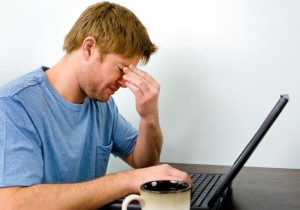Ranked: The World’s 20 Most Stressed-Out Cities (The Worst In The US Will Surprise You).
Last year, the World Health Organization (WHO) categorized burnout as an officially diagnosable syndrome stemming from chronic workplace stress. Elevating a condition to a syndrome means it’s been added to the WHO’s official compilation of diseases. But it turns out that burnout is more serious than anyone thought—especially when a 2018 Gallup survey showed that it affects nearly a quarter of the workforce on a regular basis.
Sleep research site Savvy Sleeper recently conducted a study to determine the world’s cities with the highest and lowest levels of workplace burnout. A total of 69 cities from 53 countries were analyzed. The study looked to key health and work-related categories to standardize the research, including percentage of population sleeping less than seven hours a night, percentage of population working more than 48 hours a week, time spent in traffic, mental health disorders and prevalence, lack of motivation at work, employee “presenteeism” and productivity, lack of vacation days, annual work hours and percentage of stressed-out Glassdoor reviews.
While the findings reveal low levels of workplace burnout for places like Tallinn, Estonia; Ljubljana, Slovenia and many other European cities, three US cities—Los Angeles (#9), Chicago (#12) and New York (#17)—ranked among the top 20 cities with the highest levels of workplace burnout. San Francisco (26th overall) and Miami (27th overall) rounded out the list of the top five most burned-out cities in the United States.
With Los Angeles taking the spot for the most burned-out city in the US, perhaps that laid-back Southern California vibe isn’t as prevalent as perceived. Despite Los Angeles’s beautiful weather and outdoor recreation, LA employees face a huge amount of workplace stress.
“The city has a high cost of living, which means employees often live further out from the city center,” says Ashley Doyle, staff writer at Savvy Sleeper. “Our study shows many in LA have over an hour’s journey to work every day.”
In addition, LA workers take an average of only 10 vacation days each year, and over a quarter of the city’s workers sleep fewer than seven hours each night. These factors decrease the ability to concentrate and make decisions, leading to more time spent on work tasks and greater employee burnout. “Time off from work is important to allow people to relax and recharge their batteries,” says Doyle, who also points out that the rise of tech giants in the area may be playing a part in LA’s growing overworking culture.
Another surprise: While New York is constantly referred to as “the city that never sleeps,” this study shows that Chicago, which comes in second on the list, has higher levels of burnout. “For example, Chicago has a higher volume of stressed employee on Glassdoor reviews than New York, and Chicago employees also report longer annual working hours, which is why its scores are worse overall,” says Doyle. In fact, according to Savvy Sleeper, employees in Chicago have the longest work hours of all US cities, with employees putting in nearly 41 hours a week, on average, or 2,123.50 annual hours. That’s 3.46% more than the US average of all cities at 2,051.24 annual hours.
Coming in next is New York City, which ranks as the third highest US city when it comes to employee burnout, but only 17th on the overall list. According to Glassdoor data, New York has a fair proportion of employees experiencing stress (2.21% of 1,082 reviews mentioned the word “stress”).
Like this Article? Share It! You now can easily enjoy/follow/share Today our Award-Winning Articles/Blogs with Now Over 2.5 Million Growing Participates Worldwide in our various Social Media formats below:
LinkedIn: https://www.linkedin.com/in/chris-g-laughter-b46389198/
Facebook: http://www.facebook.com/pages/First-Sun-Consulting-LLC-Outplacement-Services/213542315355343?sk=wall
Twitter: Follow us @ firstsunllc
Best Daily Choice: Follow the Best of FSC Career Articles/Blogs @
https://twitter.com/search?q=bestoffscblog&src=typeahead_click
Question: Want the ‘the best/current articles/blogs on the web’ on Job Search, Resume, Advancing/Changing your Career, or simply Managing People?
Answer: Simply go to our FSC Career Blog below & type(#career, #leadership, #life) in Blog Search: https://www.firstsun.com/fsc-career-blog/
What Skill Sets do You have to be ‘Sharpened’ ?
Continue of the article:
READ MORE: “Ranked: The World’s 10 Worst Cities To Live (3 Are In The US)”
So where did other global cities rank? Topping the list of the highest burnout levels in the world is Tokyo, due to some of the lowest scores for motivation and presenteeism, as well as the most number of people sleeping fewer than seven hours each night. Mumbai, which falls just behind Tokyo, sees employees working an average of 65 hours a week—double the average work hours of cities that see the least workplace burnout. Seoul, Istanbul and Manila round out the top five cities with the world’s highest burnout. Hey everyone! My story of ED began about five years ago. The doctor offered several drugs to choose from, but we’ve finally stopped the choice on Cialis. I don’t have any stable relations, so I take a pill only when I’m going to have sex. It’ works quite fast, about 40 minutes is enough for me to feel the effect. Can definitely recommend it.
On the other end of the spectrum is Tallinn, Estonia, which is the least stressed-out city in the world. “It is interesting to see Estonia receives the most positive score in our study, over the typically expected Nordic countries like Norway, Finland and Denmark,” says Doyle. According to Savvy Sleeper, the city offers a generous amount of vacation, with an average of 29.1 paid days off. Plus, just 5.6% of the population work more than 48 hours a week.
And there is good news around the world when it comes to workplace burnout, since cities and companies are becoming more aware of the problem and its effect on workplace productivity. Japan recently introduced a new law capping overtime to less than 100 hours a month in the hopes of tackling the nation’s culture of long working hours. Europe—which already has a reputation for being more laid-back when it comes to its workforce—is even making strides. Witness France’s new law that allows employees to switch off from work emails when they’re not in the office.
“Our research suggests businesses should make addressing some of the factors affecting employee work-life balance a priority. Not only will this ensure staff health and well being is protected, but it will also help companies continue to recruit and retain top talent,” says Doyle.
Read on for the list of the world’s top 20 cities with the most burned-out workers, as well as the list of the 10 cities with the least burned-out workers.
READ MORE: “The 43 Cheapest Places To Travel In 2020”
World’s 20 Most Burned-Out Cities
1. Tokyo, Japan
2. Mumbai, India
3. Seoul, South Korea
4. Istanbul, Turkey
5. Manila, Philippines
6. Jakarta, Indonesia
7. Hanoi, Vietnam
8. Taipei, Taiwan
9. Los Angeles
10. Buenos Aires, Argentina
11. Sydney, Australia
12. Chicago
13. Kuala Lumpur, Malaysia
14. London, United Kingdom
15. Bogota, Colombia
16. Beijing, China
17. New York City
18. Johannesburg, South Africa
19. Auckland, New Zealand
20. Hong Kong
World’s 10 Least Burned-Out Cities
1. Tallinn, Estonia
2. Ljubljana, Slovenia
3. Oslo, Norway
4. Sofia, Bulgaria
5. Copenhagen, Denmark
6. Barcelona, Spain
7. Amsterdam, Netherlands
8. Bucharest, Romania
9. Frankfurt, Germany
10. Prague, Czech Republic
Forbes.com | January 30, 2020 | Laura Begley Bloom


